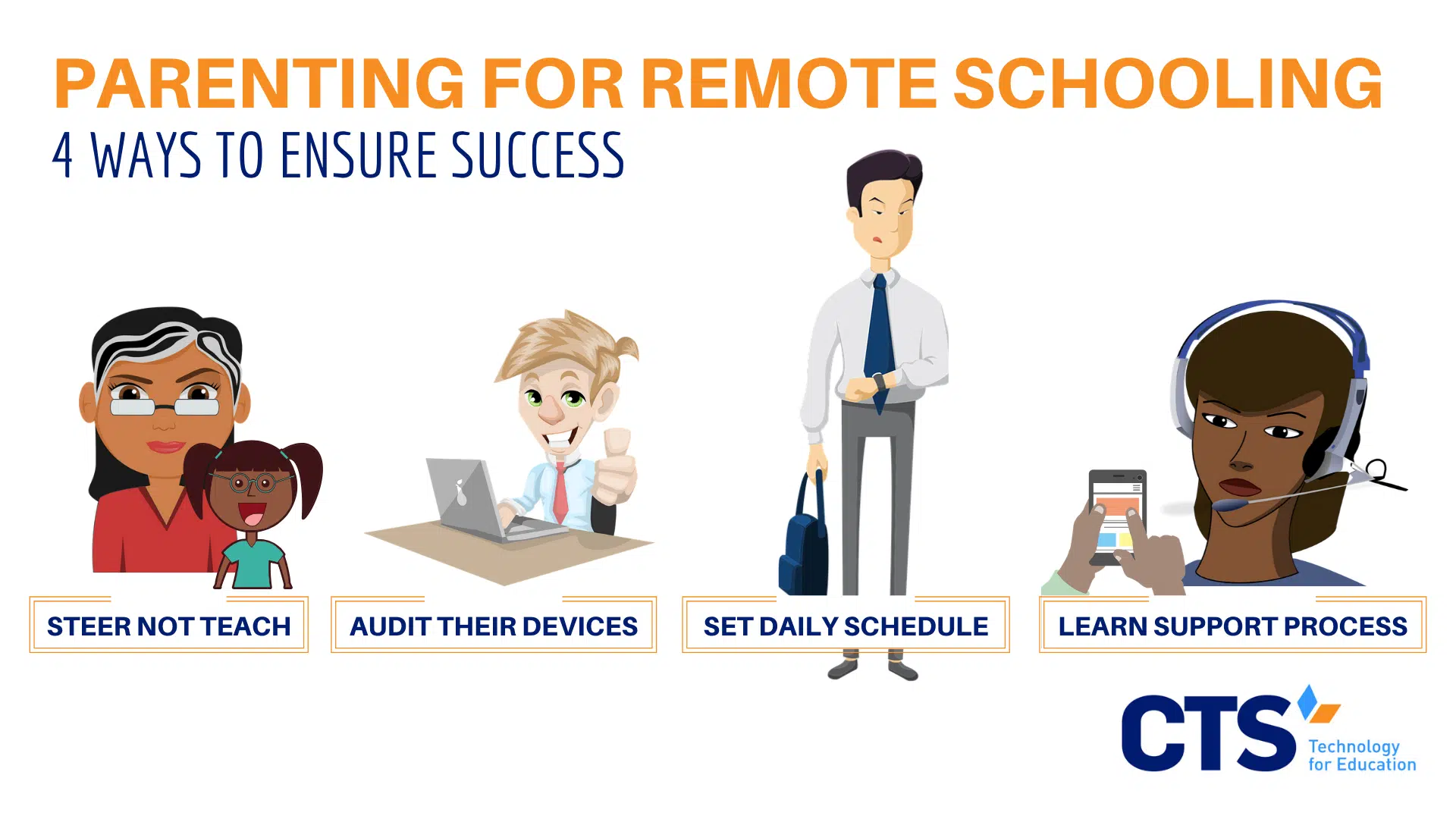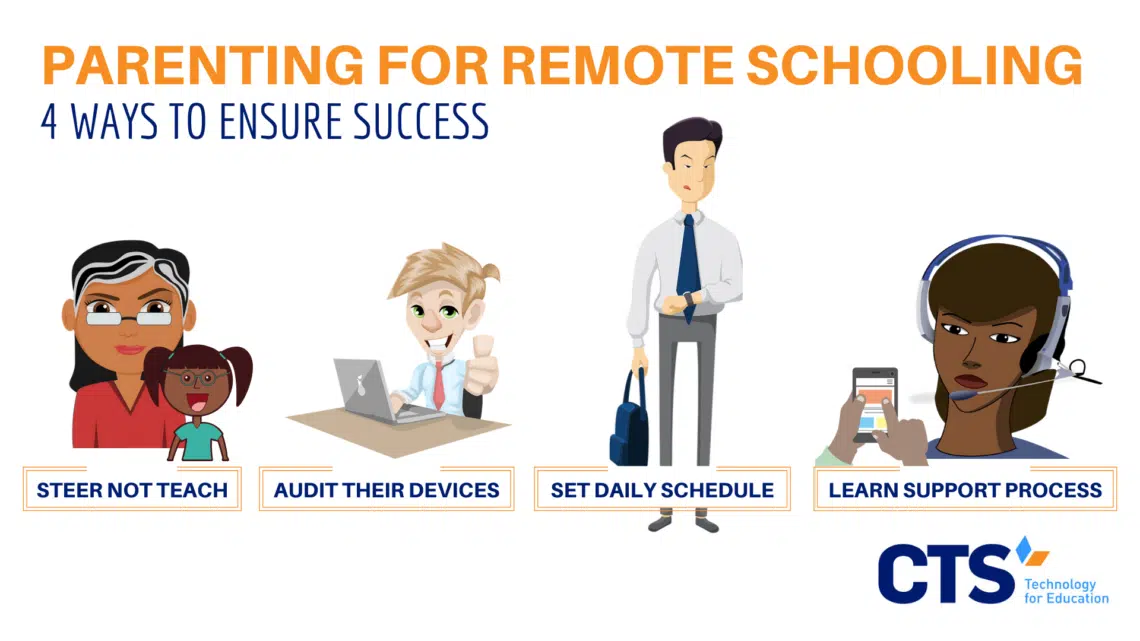Don’t feel the pressure to be the teacher. Steer your students toward learning resources.
In the wake of COVID-19-related school closures, many parents across the country have found themselves in a role they never envisioned fulfilling, that of a teacher. Almost overnight, kitchens, living rooms, and entire households have transformed, populated with learning resources like Chromebooks, DIY science labs, and school worksheets.
Needless to say, now that everything is “homework,” many parents feel overwhelmed, forced to balance, in some cases, the demands of their own remote work schedules with their child’s distance learning. Thankfully, many schools have rapidly adapted instruction for remote learning, alleviating at least some of the responsibility of families to ensure their students’ learning continues during the school closure period. Rather than serve as their child’s teacher, families can instead take a number of steps to steer their students toward the learning resources they’ll need to continue learning, even at home.
Conduct a brief device audit to ensure you have all the right learning resources in place.
Even if they’ve already begun distance learning, families can optimize remote instruction by conducting a quick audit of their school-issued or personal device to ensure all required software, learning management systems, or other programs are in place.
Many schools, for example, have made extensive use of video conferencing for distance learning. While these platforms are powerful tools for remote instruction, they may require students to download a piece of software or plug-in to perform effectively. Having these items in place before students begin learning saves time once the “school day” begins and allows students to take full advantage of their school’s remote learning resources.
If families find that their personal device doesn’t meet the requirements of their school’s distance learning program, they can contact their child’s school to see what other options are available. Similarly, families who lack consistent internet access at their homes might be able to secure a WiFi hotspot from their school.
Work with your school’s teachers to set a daily schedule for your student.
Regardless of the expectations set by your child’s school, establishing a regular weekday schedule for your student can help him or her stay focused during the school closure period. For example, students could begin each day by organizing their learning space with all of the materials they may need for a given day. Once ready, they can then review their school email accounts to review any messages they’ve received from their teachers.
From there, your student’s day may consist of discrete “learning blocks” interspersed with exercise, lunch, and other small breaks as needed. If a student completes his or her assignments quickly, families might choose to devote 30 minutes or more to pleasure reading. Before wrapping-up, parents can ask their student for a quick recap of what they’ve learned that day or which assignments they’ve completed. These conversations can form the basis for the next day’s work, ensuring any momentum isn’t lost once the “school day” ends.
Maintaining consistency in your student’s weekday schedule can enhance the efficacy of your school’s learning resources, help your child remain on track academically, and approximate the time commitment of a regular school day.
Familiarize yourself with your school’s technology troubleshooting process.
Even under ideal circumstances, issues with your school-issued or personal technology are likely to arise during the remote learning process. Such issues often become roadblocks to student learning, draining valuable time from your child’s day that could otherwise be spent on school material.
For this reason, familiarizing yourself with your school’s troubleshooting process is critical. Some schools, for example, have established a single point person to contact in the event your student encounters technical difficulties, while others have created an online form designed to triage incoming issues. These processes help eliminate barriers to instruction and save your student valuable time each weekday. Rather than allowing their students to give up on a day’s work or leave an assignment for the following day, families can leverage these protocols to ensure technical difficulties don’t interfere with instruction.
Contact your school if you encounter accessibility issues.
Even if your child doesn’t see his or her teachers on a daily basis, school staff members are still available to support student learning remotely. When in doubt, if your child is struggling with a particular assignment, can’t access a specific learning platform, or encounters technical issues, families can always contact a member of their school leadership or technology team.
At CTS, we’ve supported dozens of schools in adapting to the demands of remote instruction. From device inventories to plug-in installations, and troubleshooting, our team has helped ensure COVID-19 doesn’t interfere with student learning. Contact us today to learn more about our managed IT and other tech services and how we can work with your school community to make the most of distance learning.





